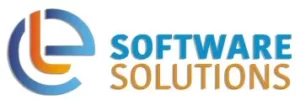Choosing the best laboratory billing software is a key step for any lab looking to improve its billing processes, ensure compliance, and increase revenue. Here’s a simple guide to help you choose the right software:
1. Understand Your Lab’s Needs

First, think about what your lab specifically needs:
- Lab Type: Different labs (clinical, diagnostic, research, and specialty) have different needs.
- Test Volume: Consider how many tests you handle daily.
- Billing Complexity: Determine if you deal with complex billing situations like insurance claims, government billing, or patient billing.
- Integration: Decide if you need the software to connect with other systems like EHR (Electronic Health Records) or LIS (Laboratory Information Systems).
2. Essential Features to Consider

Look for these key features in laboratory billing software:
a. Billing and Invoicing
- Automatic billing and invoicing.
- Customizable invoice templates.
- Support for various payers (insurance, patients, government).
b. Claim Management
- Electronic claim submission.
- Tracking and managing claim status.
- Automatic resubmission for denied claims.
c. Compliance and Regulations
- Support for ICD-10, CPT, and other coding standards.
- HIPAA compliance for data security.
- Regular updates to meet changing regulations.
d. Reporting and Analytics
- Detailed financial reports.
- Customizable dashboards.
- Insights into billing trends and financial performance.
e. Integration
- Easy integration with EHR, LIS, and other systems.
- API support for custom integrations.
f. Ease of Use
- User-friendly interface.
- Simple for staff to learn and use.
- Availability of training and support.
3. Evaluate Vendors

a. Reputation and Experience
- Check the vendor’s history and experience with lab billing software.
- Look for reviews and testimonials from other labs.
b. Support and Training
- Availability of customer support.
- Training programs for new users.
- Community forums for user support.
c. Cost
- Clear pricing structures.
- Subscription vs. one-time purchase options.
- Watch for hidden fees or additional costs.
4. Security and Compliance

Make sure the software is secure:
- Data encryption both in storage and during transfer.
- Regular security updates.
- Compliance with regulations (e.g., HIPAA).
5. Scalability

Choose software that can grow with your lab:
- Handles increasing test volumes.
- Can add new features or modules as needed.
- Supports multiple locations if your lab expands.
6. User Feedback and Case Studies

Look at user reviews and case studies:
- Success stories from labs similar to yours.
- Common issues or complaints.
7. Trial and Demo

Before deciding:
- Request a demo to see the software in action.
- Try a trial period to test it with your data and workflows.
- Get feedback from key staff members.
8. Future-Proofing

Consider the vendor’s plans for the future:
- Regular updates and new features.
- Adapting to industry changes.
Conclusion
Choosing the right laboratory billing software means understanding your needs, evaluating features, and checking vendor reliability. Following this guide will help you pick software that improves billing, boosts financial performance, and supports your lab’s growth.
